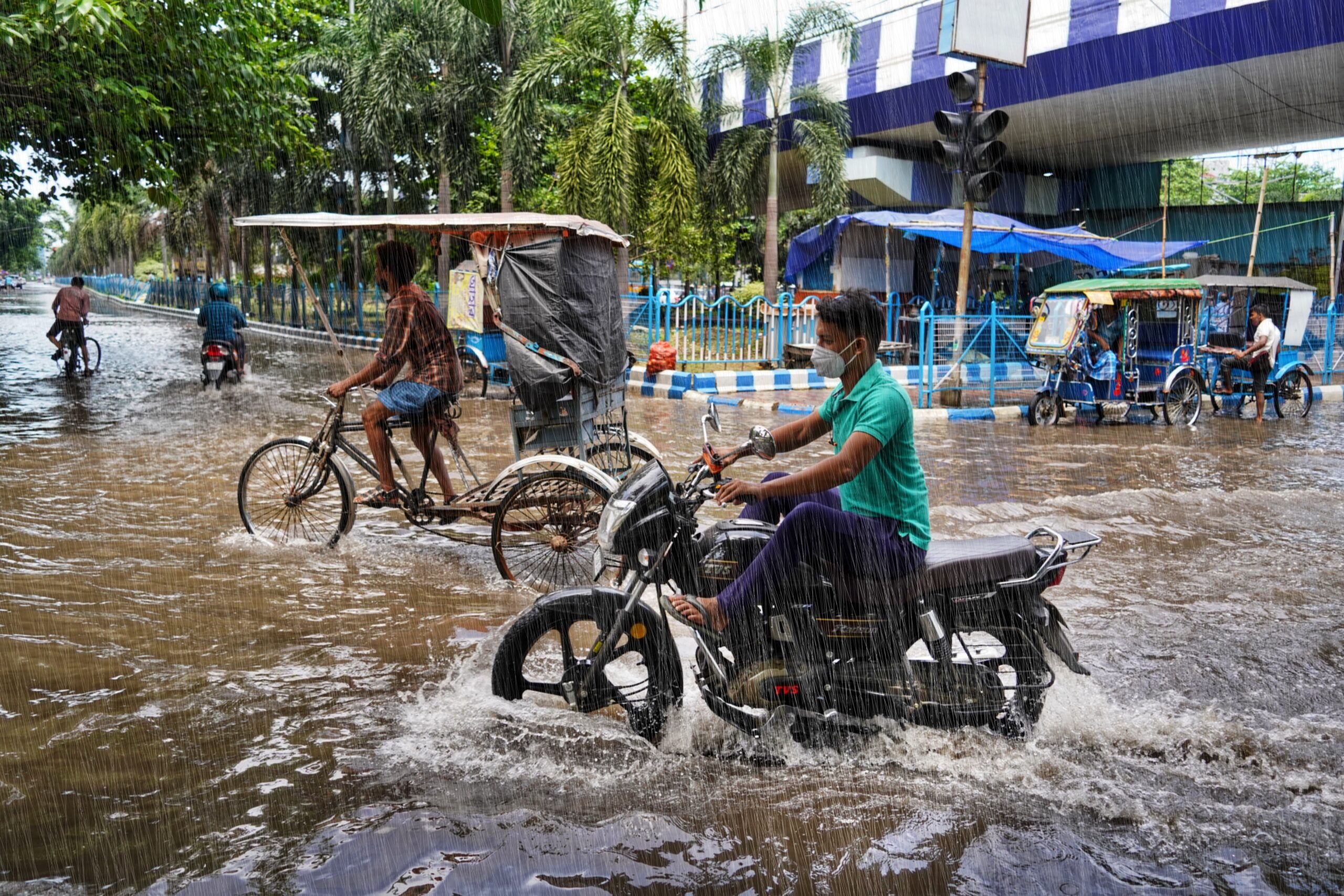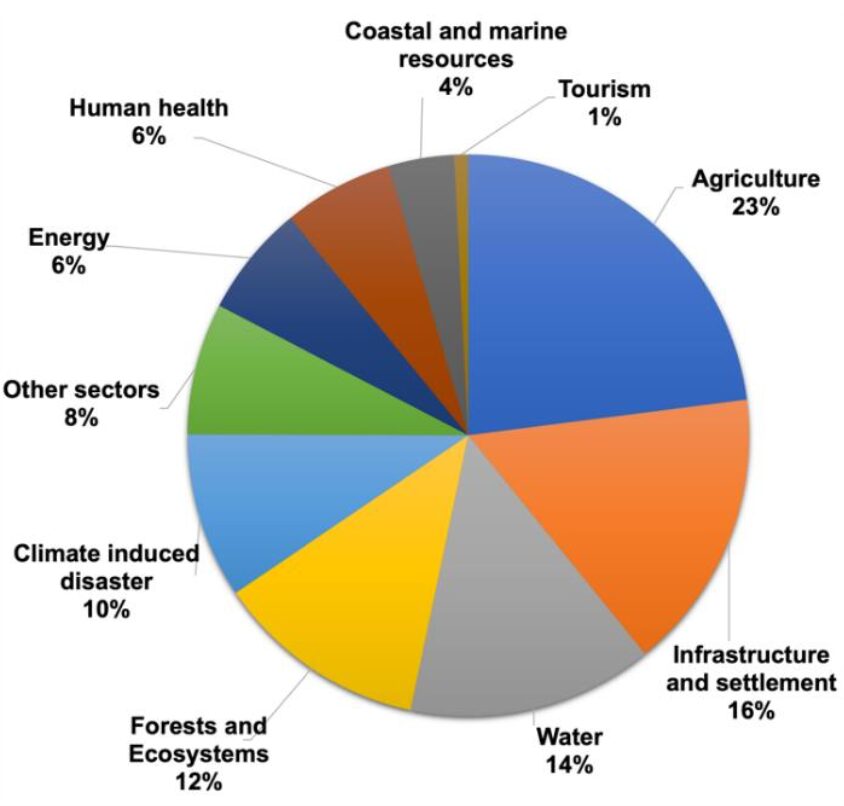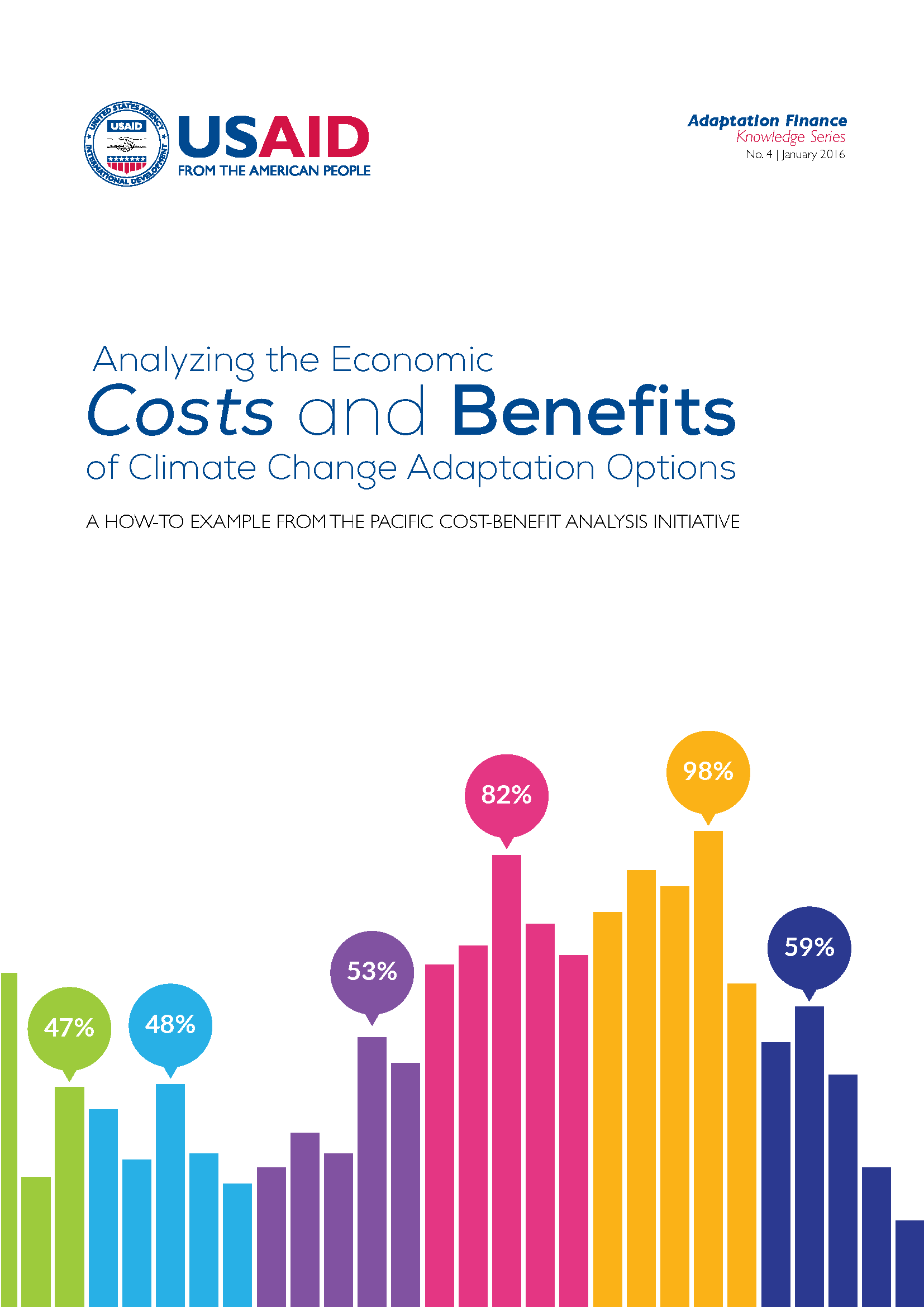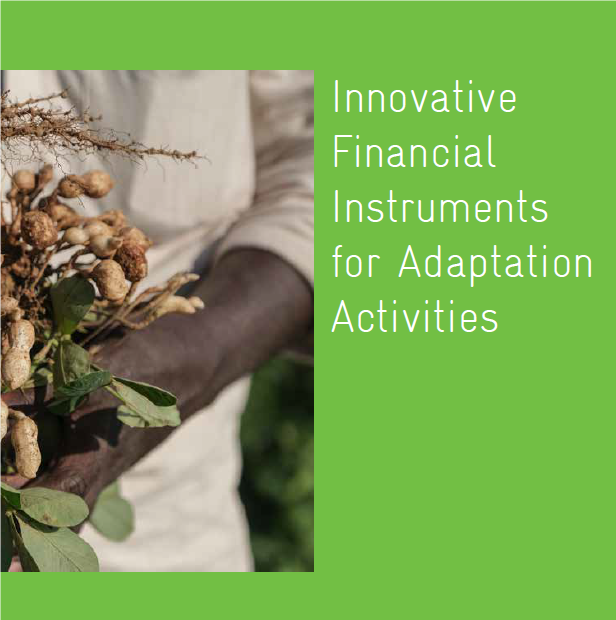Assessing and meeting the cost of adaptation: Lessons learned and good practices from developing countries

Summary
The cost of adaptation is reported as the costs of planning, preparing for, facilitating, and implementing adaptation measures to moderate harm or exploit beneficial opportunities (UNFCCC, 2009). These cost estimates can help in the allocation and prioritisation of resources, and in identifying potential adaptation finance needs.
This report synthesises relevant lessons, insights, and good practices from developing country Parties under the UNFCCC in i) assessing the costs of adaptation and ii) assessing domestic expenditures towards meeting the costs of adaptation.
This synthesis recognises that significant progress has been made by developing countries in assessing and reporting the costs of adaptation and domestic expenditures in recent years. It also identifies numerous examples of good practice among developing countries. These provide valuable lessons for improving the take-up and quality of such assessments for other countries.
This article is an abridged version of the original text, which can be downloaded from the right-hand column. Please access the original text for more detail, research purposes, full references, or to quote text.
About the report: background and methods
The Conference of the Parties serving as the meeting of the Parties to the Paris Agreement, requested the secretariat to prepare synthesis reports every two years. These reports focus on specific adaptation themes, providing relevant lessons learned and good practices in developing country Parties, in the context of the recognition of their adaptation efforts.
The synthesis study does not aim to produce new numbers on the costs of adaptation or produce a toolbox or guidance for undertaking such assessments. Instead, the aim is to provide a synthesis of studies and evidence and to draw out the new insights that they provide.
The synthesis is based on a review of:
- Countries self-reported documents, including Nationally Determined Contributions (NDCs), National Communications (NCs), Adaptation Communications (ACs), National Adaptation Plans (NAPs), and National Adaptation Programmes of Action (NAPAs);
- Other relevant reports under the UNFCCC, including the Standing Committee on Finance (SCF) Needs-based Finance project, Determination of the needs of developing country Parties and Fourth Biennial Assessment and Overview of Climate Finance Flows;
- Reports from operating entities of the UNFCCC financial mechanism (e.g the Green Climate Fund, Global Environment Facility, and Adaptation Fund), UN organizations multilateral agencies, and multilateral development banks, including information from the Pilot Program for Climate Resilience (PPCR).
While the NDCs are submitted by all countries, this synthesis focuses on developing countries only. These are defined here as countries that have ratified or acceded to the United Nations Framework Convention on Climate Change and that are not included in Annex I to the Convention.
Key findings, experiences, and insights
There has been significant progress by developing countries in assessing the costs of adaptation in recent years, with many more developing country Parties now assessing adaptation costs, and reporting these in Nationally Determined Contributions (NDCs), National Adaptation Plans (NAPs) and other communications. Almost half of developing countries have now provided adaptation cost estimates in their latest NDC updates and recent NAPs.
The total annual costs of adaptation for the 76 countries that have reported adaptation costs is estimated at approximately 71 billion USD per year (in 2020 prices), on average, for the period up to 2030. Annual adaptation costs vary from USD 0.2 million to USD 13 billion per year for individual countries.
The synthesis also finds that most developing countries have used sector, programme, project, or activity-based costing as the primary method for estimating these costs, although the level of detail and granularity of these assessments varies significantly across countries. These methods have many advantages, not least that they provide short-term and practical outputs. However, they also have some disadvantages, due to the lack of an analytical framing. A small number of developing countries have used other methods, and these provide good practice examples to support adaptation programming.
There are also now a number of developing countries that have assessed domestic expenditures on adaptation, though this number is still relatively low. Such assessments are challenging to do but they have considerable benefits.
The synthesis review has also found that many developing countries are creating the enabling conditions to increase the access and mobilization of funding for adaptation, particularly for public sources. There are good practice examples where countries have created the governance and institutional mechanisms for this, including with dedicated facilities. There are also developing countries that are now also extending these enables to consider new sources of finance and new financial instruments and approaches. These require additional capacity and skills, but they offer the potential for widening access to finance.

Lessons learnt
Significant progress is being made by developing countries in estimating the costs of adaptation, meeting the costs of adaptation (and assessing domestic expenditures), and creating the enabling conditions to access and mobilize funding for adaptation. This synthesis identifies numerous examples of good practice among developing countries that provide valuable exemplars in these areas. However, the review has also identified important lessons and further needs.
- First and foremost, given that only around half of developing countries have provided estimates of the costs of adaptation in their NDCs and NAPs, and only around half of these involve more detailed estimates, this indicates important challenges to such assessments.
- For the costs of adaptation, improved guidance and support material would be useful and would help increase the number of countries reporting costs in their NDCs and NAPs. This could include additional support material, such as information for compiling and benchmarking estimates, as well as good practice examples. This could also include advice in key areas where current practice is low.
- Countries that already have initial costs would benefit from more guidance and advice on developing adaptation investment programmes, as these can help drive resource mobilization and implementation.
- There is a further need for greater provision of capacity-building and technical assistance support to developing countries to help them develop the expertise to undertake costs assessments.
- While there is existing guidance on tracking finance, further advice and capacity-building, with associated resources to support these activities, will be essential to increase uptake.
- With respect to creating the enabling conditions to increase the access to and mobilization of funding for adaptation, many developing countries are demonstrating good practice with respect to public sources of finance. There are opportunities for peer-to-peer learning to transfer good practice to all countries, noting this will require resources and support. However, there is a wider gap on accessing other sources of finance (private, blended) and developing new financial instruments and models. Further support to develop good practice country examples, and disseminate lessons to other countries, would be beneficial.
- Finally, there are a number of broader cross cutting issues that are highlighted that could help catalyze the uptake of adaptation costing and domestic expenditure analysis in more strategic and systemic adaptation programming. These include good practice examples of mainstreaming adaptation in national development planning and financial management.
- There are also further needs to enhance the monitoring, evaluation and learning on adaptation costs, expenditures, and enabling conditions and seek to establish information and knowledge sharing initiatives across developing countries.
Suggested citation
UNFCCC (2022). Efforts of developing countries in assessing and meeting the cost of adaptation: Lessons learned and good practices. UNFCCC Adaptation Committee Report.



(0) Comments
There is no content